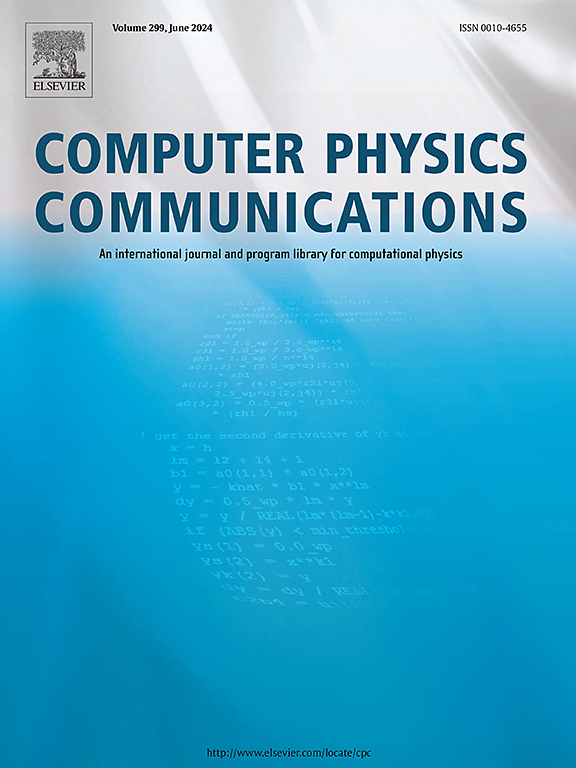Enhancing the Nektar++ spectral/hp element framework for parallel-in-time simulations
IF 7.2
2区 物理与天体物理
Q1 COMPUTER SCIENCE, INTERDISCIPLINARY APPLICATIONS
引用次数: 0
Abstract
We describe the efficient implementation of the Parareal algorithm in the Nektar++ software, an open-source spectral/hp element framework for the solution of partial differential equations, which has been designed to achieve high-scalability on high-performance computing (HPC) clusters using distributed parallelism. Recently, time-parallel integration techniques are being recognized as a potential solution to further increase concurrency and computational speed-up beyond the limits of strong scaling obtained from a pure spatial domain decomposition. Amongst the various time-parallel approaches proposed in the literature, the Parareal algorithm is a non-intrusive and iterative approach, exploiting a fine and a coarse solvers to achieve time-parallelism, and can be applied to both linear and non-linear problems. We discuss the details of the implementation and discuss the specific techniques used to adapt the code to a time-parallel framework. We demonstrate the application of these methods to multiple linear and non-linear problems provided by the existing Nektar++ solvers.
增强了用于并行实时模拟的nektar++光谱/hp元素框架
我们描述了在Nektar++软件中Parareal算法的有效实现,Nektar++是一个用于求解偏微分方程的开源光谱/hp元素框架,旨在通过分布式并行性在高性能计算(HPC)集群上实现高可扩展性。最近,时间并行积分技术被认为是一种潜在的解决方案,可以进一步提高并发性和计算速度,超越纯空间域分解所获得的强尺度限制。在文献中提出的各种时间并行方法中,Parareal算法是一种非侵入式迭代方法,利用精细和粗糙求解器来实现时间并行,可以应用于线性和非线性问题。我们讨论了实现的细节,并讨论了用于使代码适应时间并行框架的特定技术。我们演示了这些方法在现有nektar++解算器提供的多个线性和非线性问题中的应用。
本文章由计算机程序翻译,如有差异,请以英文原文为准。
求助全文
约1分钟内获得全文
求助全文
来源期刊

Computer Physics Communications
物理-计算机:跨学科应用
CiteScore
12.10
自引率
3.20%
发文量
287
审稿时长
5.3 months
期刊介绍:
The focus of CPC is on contemporary computational methods and techniques and their implementation, the effectiveness of which will normally be evidenced by the author(s) within the context of a substantive problem in physics. Within this setting CPC publishes two types of paper.
Computer Programs in Physics (CPiP)
These papers describe significant computer programs to be archived in the CPC Program Library which is held in the Mendeley Data repository. The submitted software must be covered by an approved open source licence. Papers and associated computer programs that address a problem of contemporary interest in physics that cannot be solved by current software are particularly encouraged.
Computational Physics Papers (CP)
These are research papers in, but are not limited to, the following themes across computational physics and related disciplines.
mathematical and numerical methods and algorithms;
computational models including those associated with the design, control and analysis of experiments; and
algebraic computation.
Each will normally include software implementation and performance details. The software implementation should, ideally, be available via GitHub, Zenodo or an institutional repository.In addition, research papers on the impact of advanced computer architecture and special purpose computers on computing in the physical sciences and software topics related to, and of importance in, the physical sciences may be considered.
 求助内容:
求助内容: 应助结果提醒方式:
应助结果提醒方式:


